Before the Ninoy Aquino International Airport there was Nielson Field, the first principal airport of Manila from 1937 to 1947. Standing still between what used to be the two runways is the former control tower and passenger station –the Nielson Tower. It was in this building where passengers showed their passport and gathered their luggages.

Since 1996, the tower is home to Filipinas Heritage Library (FHL). A tour to this historic air terminal can be arranged through FHL.
Nielson Tower
Not to many people know that the Philippines is one of the first countries to have an international airport in this part of the world.
Cecile Ingusan of FHL gave us an informative tour of Nielson Tower. According to Cecile, the art-deco inspired building was wittily designed like an airplane, but this is obvious only from the air. The entry way and ticketing offices were the body of the airplane, the waiting lounges for the passengers were the wings, and the tower itself was a cockpit.
We ascended a spiral staircase to reach the historic tower room where the news about the attack on Pearl Harbor on December 7, 1941 was first heard in the Philippines. The tower room now serves as a reading room and conference venue.
Prior to Filipinas Heritage Library, the Nielson Tower houses the Nielson Tower Club and Restaurant which was marked with the ambience of the Thirties. That era was described as a sung happy time which historian Nick Joaquin fondly called peace time. The restaurant tried to capture the “peace time” era through the décor, staff uniform, and cuisine.
Nielson Field
The original Nielson Field is described as “located on a hard tract of land jutting from rice fields, magnificently visible from the air and allowing clear approaches from all sides.” It came to be known as Nielson Airport after its principal investor and builder, Laurie Reuben. Nielson, an American stockbroker.
Today, Nielson Field is simply Makati Central Business District. The old runways are Ayala Avenue and Paseo de Roxas.

Nielson Field itself took six months to build on an area of 42 hectares in San Pedro, Makati. One thousand men worked on the runways alone, onto which 80,000 gallons of asphalt were poured.
Philippine Herald correspondent Juan P. Lopez wrote in June 16, 1937: “the airdrome itself is on a Php. 100,000 strip of hard land, and it is one of the fastest drying-out tracts. The entire enterprise represents an investment of one million pesos, but many thousands more are coming, after the inauguration, to complete the construction of the powerful radio signaling system, customs and quarantine facilities, doctor’s sheds, and aerial detection finders capable of embracing a radio-communicating range of 7,000 miles, supplemented by radio beacons powerful enough to nullify all hazards due to poor atmospheric conditions.”
The First Airline Companies
The two airlines companies operating in 1937 were the Iloilo-Negros Air Express Company (INAEC) and the Philippine Air Taxi Company (PATCO), which more or less followed the route of mining businessmen throughout the country.
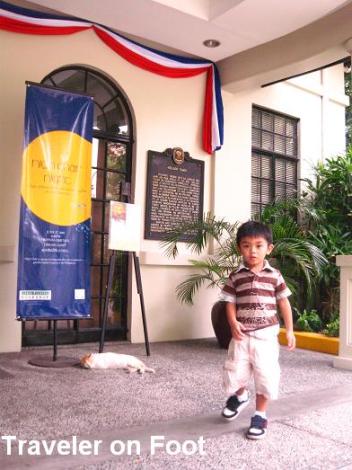
PATCO, flying Bellanca monoplanes, began because of the Philippine’s gold boom in the ‘30s. It stopped operations in 1940, and one of its owners, Colonel Andres Soriano, acquired the franchise and formed Philippine Air Lines, whose first flights to Baguio and Paracale took place in 1941.
Filipinas Heritage Library
Today, Neilson Tower houses the Filipinas Heritage Library. The library has an extensive collection of Filipiniana materials. It is a treasure trove of over 2,000 volumes on rare Philippine publications printed before 1946, the oldest dating to 1609 and of over 13,000 volumes of contemporary books covering an extensive array of subjects relevant to the Philippines and the Filipino, with focus on history, culture, art, literature and the social sciences.
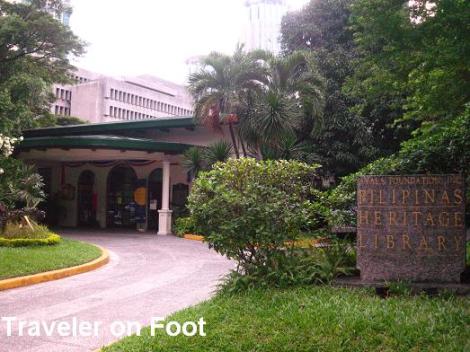
According to Cecile, the collection was housed at the Ayala Museum before it was moved to Nielson Tower in 1996. In 2001, UNESCO awarded Nielson Tower with the Asia-Pacific Cultural Heritage Award for it adaptive reuse and remarkable conversion of an airport to a library. Gota de Leche and the Far Eastern University also received this prestigious recognition in 2003 and 2005, respectively.
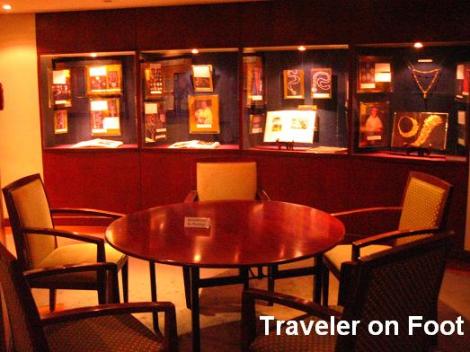
Near the entry way is Libros Filipinos, a specialty bookshop that houses an extensive selection of Philippine publication, multimedia products and merchandise.
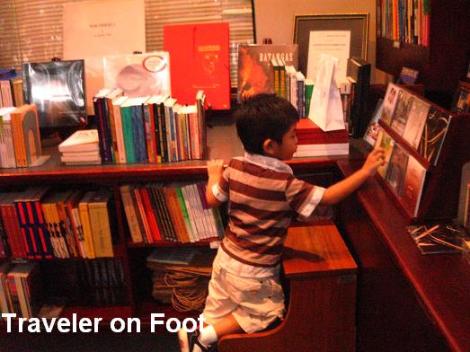
Included in the non-book collection of FHL is the Himig Collection. This “library of music” has more than 1,000 phonograph records covering a variety of Philippine recordings dating from as early as the 1900s.

The Library also has an in-house photo gallery that exhibits black and white photography called the Alcove Perspective. With its elegant ambience, the library also serves as a convenient venue for conferences, meetings, and special events.
Click Part I – Church of Nuestra Señora de Gratia, Part II – Guadalupe’s San Nicholasi, Part III –Sampiro de Makati, Part IV –Old Makati’s Bailes de los Arcos, Part VI – Nielson Tower, Part VII –The Manila American Cemetery, Part VIII – Reposo Street Makati
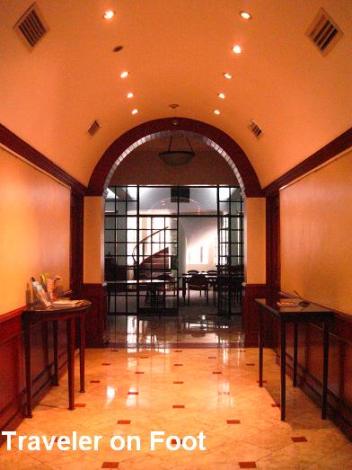

I passed by this area for 10 times already and noticed Nielsen Tower but never paid attention coz I thought its off limits… next time I will take time to visit this place if I happen to come to Makati…
how much do i pay to enter this place? and this is open til what time?
It is a great place Arnold. It is one of those historical places that every Filipino should see.
Great place.
Not too many people know that this place exist.